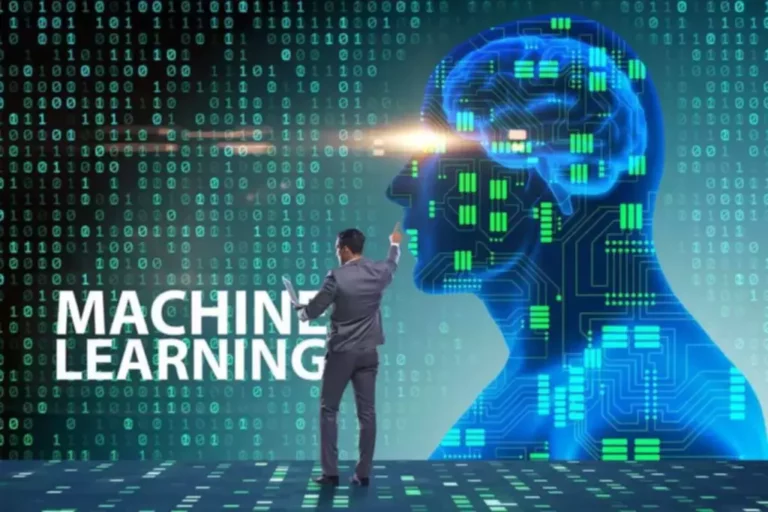Through ongoing research, growth, and optimization, GPT-4 holds the promise of surpassing different Language Model Models. Already established as one of the most advanced LLMs, GPT-4 displays outstanding efficiency throughout a variety of natural language processing benchmarks (Ray). However, to achieve superiority over all different LLMs and preserve its popularity, GPT-4 should persistently enhance its inherent limitations.

As such, I don’t agree with some who have argued that AI alignment must be focused on alignment of present LLMs and pushed by quick timelines (on the order of years). Numerous analysis in this custom have discovered that LLMs usually rely on superficial heuristics and spurious correlations in their coaching data, resulting in poor efficiency on circumstances carefully selected to highlight these shortcomings. For occasion, LLMs are often inconsistent, performing a task properly when requested in a technique however failing miserably when the wording or context is modified barely. Furthermore, people also can present such sensitivity to phrasing and context similar to the LLMs. In the pure language processing (NLP) area, giant language fashions (LLM) have emerged as powerful tools. Unlike conventional AI algorithms trained for narrow, particular tasks, LLMs are educated on vast datasets of textual information, allowing them to grasp and generate human language with unprecedented sophistication.
The journey of LLMs is simply beginning, and the street forward is filled with potentialities. For occasion, Explainable AI (XAI) is a subject of AI that focuses on creating methods and fashions that make the decision-making process of AI methods clear and comprehensible to people. There are a number of open-source libraries obtainable that implement XAI strategies, similar to LIME and SHAP.
The Role Of Apis Within Large Language Fashions And The Shift Towards A Multi-llm World
ArXiv is dedicated to these values and only works with partners that adhere to them. In addition, there are additionally on-line platforms like IBM’s AI Explainability 360, which supplies interactive demos and helpful resources to understand the ideas of explainable AI. For any system to be deployed in an automatic and production-ready means, a minimal performance https://www.globalcloudteam.com/large-language-model-llm-a-complete-guide/ stage is required. Get free, timely updates from MIT SMR with new ideas, analysis, frameworks, and extra. Mikhail Burtsev, Ph.D., is a Landau AI fellow at the London Institute for Mathematical Sciences, former scientific director of the Artificial Intelligence Research Institute, and creator of greater than a hundred papers within the area of AI.
More than that, business applications, or a scarcity of success thereof, will present whether or not that is true in the coming 12 months, well before we hit GPT-5+. CoCondenser introduces an progressive approach to Dense Passage Retrieval by including an unsupervised corpus-level contrastive loss to warm up the passage embedding space. This architectural change eliminates the necessity for heavy data engineering and enormous batch training, making the mannequin extra environment friendly and effective. You can construct RAG functions on prime of LLMs with entirely open-source components and host them yourself. Or you ought to use a platform like EDB Postgres AI to handle the Postgres and pgvector parts, and to routinely generate (and update) embeddings on chosen columns of existing tables.
- To mitigate the danger of deceptive outputs, it’s crucial to critically evaluate and fact-check the data generated by LLMs.
- I do not disagree with this, however I suppose it is very prone to stop being true in practice because the tech is commercialized.
- Hallucination is recognized as a major downside for LLMs for many use cases and many researchers are working to minimize back their occurrence.
- I also argued that the increasing costs of coaching massive models and restricted inventory of high quality training knowledge will imply that growth of LLMs at current rates won’t be able to continue for more than a few years.
- Otherwise, a basic purpose mannequin can take months of expensive hardware to coach.
Gemini/ChatGPT wouldn’t protest as a end result of it doesn’t have the capability to care. Hallucinations can even lead to confirmation bias as a result of users are able to ask questions until they get a response that confirms their beliefs. Confirmation bias, in flip, leads to misinformation and can negatively affect completely different industries such as the legal sector and prescription drugs. In the next sections, we’ll delve deeper into these limitations, compare LLMs with Foundation Models, and discover potential methods for overcoming such limitations. The Diagram below gives a great total representation of the hierarchy, as we’ll discuss in the content material below. An LLM may wrestle to distinguish between these two meanings of “bark” based mostly on context, which might lead to incorrect or nonsensical responses.
Inconsistency – Llms Can Contradict Themselves
Martin Reeves is chairman of the BCG Henderson Institute, centered on business strategy. Adam Job, Ph.D., is director of the Strategy Lab at the BCG Henderson Institute. Our summer 2024 concern highlights methods to better support clients, partners, and employees, whereas our special report reveals how organizations can advance their AI follow.

On the other hand, limitations on the output size are generally much less of a priority. LLMs can generate substantial quantities of text with out working into important output length restrictions. However, it is the input length that may pose challenges when coping with extensive contextual information. Since LLMs are so heavy, it’s appealing for vendors to depend on third party APIs provided by distributors like OpenAI (the company behind ChatGPT) as an alternative of hosting them on proprietary hardware. This implies that if private data is to be processed with an LLM-based utility, it is more doubtless to be processed by, and doubtlessly stored on, third celebration servers that could possibly be located anyplace in the world.
They may be fine-tuned on particular tasks, which can result in extra dependable and task-specific outputs. For instance, a Foundation Model fine-tuned on medical textual content could be more dependable in producing medical advice than a general-purpose LLM. Understanding limitations is crucial for the continued growth and refinement of these fashions, guaranteeing they can be used safely and successfully. This weblog post will delve into the constraints of LLMs, compare them with Foundation Models, and explore methods for overcoming the restrictions.
Limits Of The Present Paradigm
Fortunately, all the major giant language suppliers have been working exhausting on the protection of these models, and so most models have gotten a lot safer over time. And if you use the web interfaces so the most important LLM suppliers, it is actually been getting much more durable over time to get them to output most of these dangerous speech. And as I mentioned, subsequent week we’ll take a look at some strategies for overcoming a few of these limitations to make what LLMs can do even broader and more powerful.

Instead, I expect that LLMs will form one component of many that will have to be integrated into a truly general-purpose clever system, one which can doubtless take decades of further analysis to develop. Notably, renowned conversational AI platforms like Replika AI, Haptik, BotStar, and Botpress have already embraced OpenAI’s GPT technology. By harnessing the facility of Conversational AI platforms, we will enhance contextual understanding, dynamic interaction, personalization, content material filtering, and pure language technology. This integration unlocks exciting possibilities throughout domains like customer assist, content material technology, digital assistants, and extra.
Options
While massive language fashions represent an incredible technological achievement, they have significant limitations that require further research and consideration. Training requires large quantities of data, complicated algorithms, and highly effective computing infrastructure, resulting in significant prices, doubtlessly limiting accessibility and hindering research and improvement efforts. Running giant LLMs in real-world purposes additionally often requires extensive assets.
As the know-how evolves, we might even see LLMs that may extra faithfully simulate the incremental knowledge accumulation and studying that comes naturally to people. For now, it’s essential to ground your expectations and craft your prompting methods with this constraint in thoughts. By acknowledging its limitations, actively addressing bias via various strategies, and prioritizing ethical development, you’ll be able to ensure that LLMs are used responsibly and contribute to a more inclusive and equitable future. LLMs characterize a big leap forward in NLP, enabling us to work together with language in richer and extra significant ways.

It isn’t any secret that the current release of ChatGPT, GPT-4, and other highly succesful giant language models (LLMs) has sparked both super public interest and vital concern within the EA community. In this text, I share a few of my thoughts on why I am not as concerned in regards to the AI alignment of LLMs as many within the EA neighborhood. In explicit, whereas there are reliable concerns concerning the safety and reliability of LLMs, I do not assume it’s doubtless that such systems will soon reach human levels of intelligence or capability in a broad vary of tasks.
Limitations Of Large Language Fashions For Real-world Functions
Since LLMs are probabilistic and speculative gadgets, their output is tough to manage. People have put a lot of effort into creating intricate prompt engineering strategies making an attempt to attain desired goals. The drawback will get more difficult due to the rapid evolution of this technology. The minimal you are able to do to address this challenge is to ascertain a robust validation mechanism to make sure things do not break down unexpectedly. Any synthetic intelligence (AI) technology has to go through a training part earlier than it can be deployed to serve in an utility.
We should pursue a diverse vary of methods for mitigating AI threat, and devote significant assets towards longer time horizons. These are very massive neural networks which are skilled on large corpuses of knowledge, most of which is from the internet. The models are normally skilled to predict the subsequent word in a sentence, and during coaching they study complicated statistical associations between words in natural language. Recently, OpenAI has extended this framework by adding a technique called Reinforcement Learning from Human Feedback (RLHF).

LLMs can typically produce confident and authoritative-sounding outputs which are completely made up. This can mislead customers into believing that the generated content material is factual and dependable. Such hallucinations can have critical consequences, as seen in the case of a lawyer who unknowingly submitted a legal filing with fabricated court cases generated by an LLM.
Biases present within the training knowledge also can lead to factually incorrect or misleading outputs. Due to their sheer measurement and coaching on large datasets, LLMs can seize advanced nuances and dependencies in language significantly better than traditional NLP fashions. That interprets to improved accuracy in machine translation, text summarization, sentiment analysis, query answering, entity recognition, and part-of-speech tagging. Natural language processing (NLP) is a department of synthetic intelligence that analyzes and understands human language. In latest years, NLP has advanced as a result of LLMs pushing the boundaries of what’s potential in language understanding and technology. In this article, we will present an summary of LLMs’ capabilities and limitations.
Harnessing Ai For Future-proof Recruitment Strategies
Moreover, the fashions underlying APIs like ChatGPT can change over time (some obtain frequent, unannounced updates). Or worse, LLM-based product options might stop working unexpectedly when an updated LLMs begins reacting in a unique way to the beforehand engineered directions (prompts). To address bias, fastidiously choose and clean training knowledge to remove biases and promote diversity. Develop algorithms that explicitly contemplate fairness metrics and mitigate bias during coaching and inference. Implement human oversight and supply explainable AI solutions to determine and tackle potential biases in LLM outputs. They may be improved to carry out various NLP duties with minimal changes, lowering the necessity for specialized fashions for each area.
